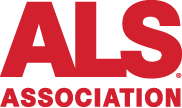- For People with ALS
and Caregivers Where to find help
- Newly Diagnosed
- ALS Registry
- Clinical Trials
- Familial ALS
- Military Veterans
- Augmentative Communication
- Children's Resources
- Caregivers
- Professional Education
- ALS Chapter Grant Program
- Resources
- Remembering Our Loved Ones
- Bereavement Support
Register with Our Chapter
- Sign Up Here
- Help Fight ALS

ALS Ice Bucket Challenge Progress

